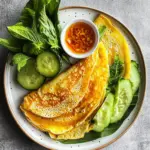From Football Fields to Family Tables
The original Tottenham Cake hails from the North London district of Tottenham. It was first baked in the early 20th century by a Quaker baker named Henry Chalkley. In an effort to provide affordable treats for the local children, especially those attending Tottenham Hotspur football matches, he sold slices of this cake for a penny, and end pieces were often given away for free. This act of generosity cemented the cake’s role as a communal treat, something designed to bring joy to the masses with simple, accessible ingredients.
Mary Berry’s version keeps the spirit of the original alive while offering a few subtle refinements to texture and balance. By using quality ingredients and precise proportions, her rendition delivers a soft, fine-crumbed sponge that’s light yet indulgent—perfect for modern palates without losing its traditional identity.
The Signature Pink Icing
No Tottenham Cake is complete without its distinctive pink topping. Traditionally, the color was derived from raspberry juice, which provided not only the hue but also a subtle tang that cut through the sweetness of the sugar. While Mary Berry allows for the use of pink food coloring for consistency and convenience, many bakers still opt for fruit juices to achieve that natural flavor depth and delicate tartness.
This pink icing isn’t just for looks—it’s a nostalgic nod to childhood, to school bake sales and village fêtes. It gives the cake an instantly recognizable appearance, inviting familiarity and sparking memories for many who grew up with it. The icing is simple to prepare but adds the perfect sugary contrast to the more mellow sponge beneath.
Toppings That Add Texture and Whimsy
A hallmark of Tottenham Cake is its cheerful decoration. After the icing is spread, it’s typically adorned with either desiccated coconut or colorful sprinkles known in Britain as hundreds and thousands. These toppings are more than ornamental; they add texture and a playful finish that appeals to children and adults alike.
Mary Berry’s recipe gives you the freedom to choose between the two classic toppings, both of which evoke a sense of tradition. Coconut lends a chewy, aromatic bite, while sprinkles add a pop of color and crunch. Each option transforms the simple traybake into a celebration on a plate, making it especially popular for birthdays, casual parties, and school fundraisers.
A Cake for Every Occasion
One of the key reasons Tottenham Cake has endured through generations is its versatility. It’s easy to make, requires no advanced baking techniques, and yields a large quantity that’s ideal for feeding a crowd. Whether served as a snack with a cup of tea, brought to a community potluck, or wrapped up in a lunchbox, this cake fits seamlessly into almost any setting.
Mary Berry’s approach emphasizes the cake’s accessibility. Her straightforward mixing method and use of a traybake tin make it foolproof, even for novice bakers. It’s the kind of recipe that encourages family participation—perfect for getting children involved in baking without the stress of complex steps or specialized equipment.
A Canvas for Creativity
Although the classic pink icing is what gives Tottenham Cake its identity, it also provides an excellent canvas for creativity. Some modern bakers have taken to infusing the icing with other fruit juices like strawberry or cherry, adding subtle variations in flavor. Others experiment with natural food dyes or dried flower petals for a more artisan look.
The sponge itself can be adapted as well. A dash of lemon zest, a hint of almond extract, or even a light fruit jam layer can add interesting dimensions without compromising the essence of the cake. Mary Berry’s version keeps it simple and true to form, but the flexibility of the base invites innovation, especially in contemporary kitchens that favor seasonal or personalized touches.
A Symbol of Community and Comfort
Tottenham Cake, in its purest form, is a reminder of how food can bring people together. Its origins in charity and local celebration make it more than just a dessert—it is a testament to kindness, community, and the unifying joy of sharing something sweet. Mary Berry’s endorsement of the recipe has helped reintroduce it to a wider audience, proving that some of the most treasured culinary gems come from humble beginnings.
Even today, you’ll find slices of Tottenham Cake sold in school canteens, church fundraisers, and café counters across the UK. Its popularity spans generations, largely because it evokes a sense of comfort and familiarity that is difficult to replicate with trendier or more complex desserts.
Nutritional Considerations in Modern Times
While undeniably a treat, Tottenham Cake is relatively modest in its nutritional profile when compared to more indulgent confections. A single slice, if the tray is divided into 20 portions, offers about 230 calories. The balance of sugar and fat is on the higher side due to the icing and butter content, but its simplicity allows room for small health-conscious tweaks.
Some bakers reduce the sugar slightly or swap out the icing for a glaze with lower sugar content. Others substitute part of the butter with yogurt or opt for a gluten-free flour blend. While these variations stray from Mary Berry’s traditional method, they offer flexibility for those with dietary needs or health goals.
Still, in its original form, Tottenham Cake is best enjoyed in moderation—as a treat to be savored during special moments, just as it was intended over a century ago.
Conclusion: Why This British Classic Still Matters
Mary Berry’s Tottenham Cake is more than a retro bake—it is a cultural staple that stands the test of time. With its light sponge, cheerful pink icing, and roots in community kindness, it embodies the best aspects of British home baking. It’s easy enough for a beginner yet charming enough to hold a place on a celebration table. It connects generations through taste and tradition, making it not just a recipe but a cherished story on a plate.
For those who enjoy baking with purpose and memory, Tottenham Cake offers the ideal combination of simplicity, nostalgia, and sweet satisfaction. Mary Berry’s version is a love letter to traditional British baking—proving that sometimes, the best recipes are the ones that remind us where we come from. Whether you’re making it for your family, a fundraiser, or just for fun, Tottenham Cake is sure to brighten your day with every soft, pink-iced slice.






